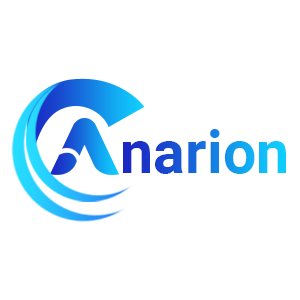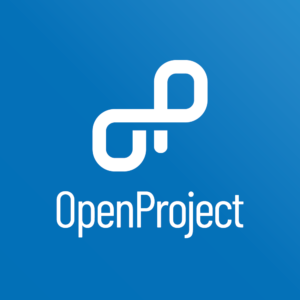OpenProject VM by Anarion Technologies
OpenProject is a comprehensive open-source project management software tailored for teams seeking to enhance collaboration and streamline project workflows. It offers a wide array of features designed to support various project management methodologies, including traditional waterfall and agile frameworks.
Key functionalities include interactive Gantt charts that allow users to visualize project timelines and dependencies, as well as task management tools that enable the assignment, prioritization, and tracking of tasks throughout the project lifecycle. Time tracking features help monitor the hours spent on specific tasks, facilitating better resource allocation and budget management.
In addition to these core features, OpenProject provides robust support for document management, enabling teams to store, share, and collaborate on project-related documents seamlessly. The software also includes budget management tools to help track expenses and ensure projects stay within financial constraints.
OpenProject’s customizable workflows allow organizations to tailor the software to their unique processes, ensuring that it fits seamlessly into existing practices. Furthermore, its reporting and analytics capabilities enable teams to generate insightful reports on project progress, resource utilization, and performance metrics, fostering transparency and informed decision-making.
With its user-friendly interface and extensive functionality, OpenProject is an ideal solution for businesses looking to improve productivity, enhance communication, and achieve successful project outcomes. Its open-source nature also allows for continuous improvement and customization, making it a versatile choice for diverse industries.
To subscribe to this product from Azure Marketplace and initiate an instance using the Azure compute service, follow these steps:
1. Navigate to Azure Marketplace and subscribe to the desired product.
2. Search for “virtual machines” and select “Virtual machines” under Services.
3. Click on “Add” in the Virtual machines page, which will lead you to the Create a virtual machine page.
4. In the Basics tab:
- Ensure the correct subscription is chosen under Project details.
- Opt for creating a new resource group by selecting “Create new resource group” and name it as “myResourceGroup.”
5. Under Instance details:
- Enter “myVM” as the Virtual machine name.
- Choose “East US” as the Region.
- Select “Ubuntu 18.04 LTS” as the Image.
- Leave other settings as default.
6. For Administrator account:
- Pick “SSH public key.”
- Provide your user name and paste your public key, ensuring no leading or trailing white spaces.
7. Under Inbound port rules > Public inbound ports:
- Choose “Allow selected ports.”
- Select “SSH (22)” and “HTTP (80)” from the drop-down.
8. Keep the remaining settings at their defaults and click on “Review + create” at the bottom of the page.
9. The “Create a virtual machine” page will display the details of the VM you’re about to create. Once ready, click on “Create.”
10. The deployment process will take a few minutes. Once it’s finished, proceed to the next section.
To connect to the virtual machine:
1. Access the overview page of your VM and click on “Connect.”
2. On the “Connect to virtual machine” page:
- Keep the default options for connecting via IP address over port 22.
- A connection command for logging in will be displayed. Click the button to copy the command. Here’s an example of what the SSH connection command looks like:
“`
ssh azureuser@10.111.12.123
“`
3. Using the same bash shell that you used to generate your SSH key pair, you can either reopen the Cloud Shell by selecting >_ again
or going to https://shell.azure.com/bash.
4. Paste the SSH connection command into the shell to initiate an SSH session.
Usage/Deployment Instructions
Anarion Technologies – OpenProject
Note: Search product on Azure marketplace and click on “Get it now”
Click on Continue
Click on Create
Creating a Virtual Machine, enter or select appropriate values for zone, machine type, resource group and so on as per your choice.
After Process of Create Virtual Machine. You have got an Option Go to Resource Group
Click Go to Resource Group
Click on the Network Security Group: openproject-nsg
Click on Inbound Security Rule
Click on Add
Add Port
Add Port
Destination Port Ranges Section* (where default value is 8080)
8080
Select Protocol as TCP
Option Action is to be Allow
Click on Add
Click on Refresh
Copy the Public IP Address
Configure OpenProject
SSH into Terminal & Run these Commands:
$ sudo su
$ sudo apt update
$ cd ../../
Create the OpenProject User and Group: Run the following commands to create the openproject user and group:
$ sudo groupadd openproject
$ sudo useradd -g openproject -d /opt/openproject -s /bin/false openproject
Set the Correct Ownership: Now, change the ownership of OpenProject files to the openproject user and group:
$ sudo chown -R openproject:openproject /opt/openproject
Start the wizard
$ sudo openproject configure
OpenProject comes in two editions:
1. The default edition, which is targeted at general project management.
2. The BIM edition, which is specifically target at the constructionindustry.
You will be asked to install or use the database as shown below:
Select the second option and hit Enter. You will be asked to install the Webserver:
Select Apache webserver and hit Enter. You will be asked to set a fully qualified domain name (VM Public IP Address) :
Provide your fully qualified domain name and hit Enter. You will be asked to set the installation path:
Leave it blank and hit Enter. You will be asked to enable SSL:
Select no and hit Enter. You will be asked to install SVN:
Select your desired option and hit Enter. You will be asked to specify the SVN repo path:
Provide your SVN repo path or leave it default and hit Enter. You will be asked to set up Git:
Select skip and hit Enter. You will be asked to set up sendmail:
Select skip and hit Enter. You will be asked to install a memcached server:
Select skip and hit Enter to finish the configuration.
Manage OpenProject Service
At this point, OpenProject is installed and running. You can verify the status of OpenProject with the followingcommand:
$ systemctl status openproject
You can also start and stop OpenProject with the following command:
$ systemctl start openproject
$ systemctl stop openproject
Access OpenProject Web UI
Now, open your web browser and access the OpenProject admin interface using the URL http://IP-Address/admin. You will be redirected to the OpenProject login page:
Admin Credentials show on Terminal
ThankYou!!!



